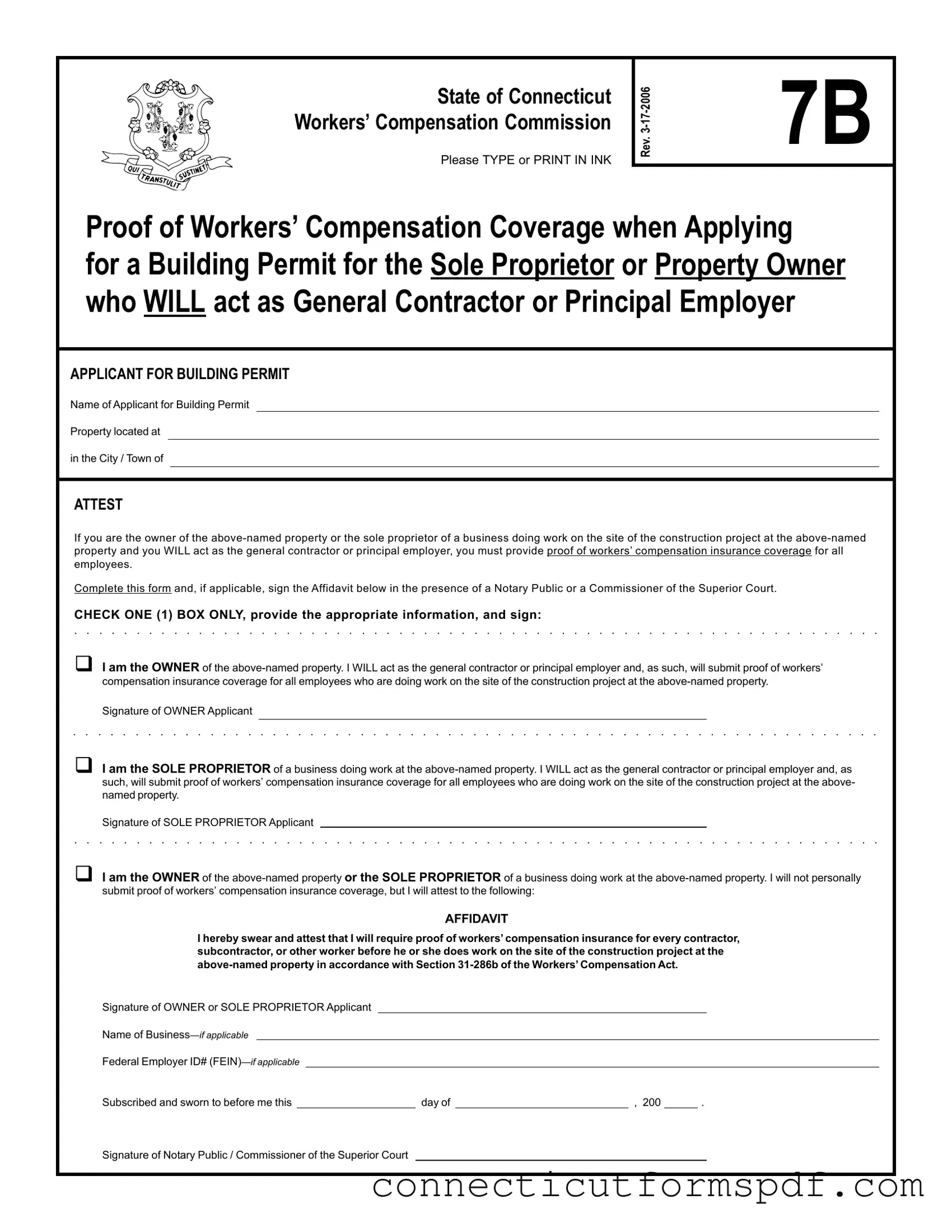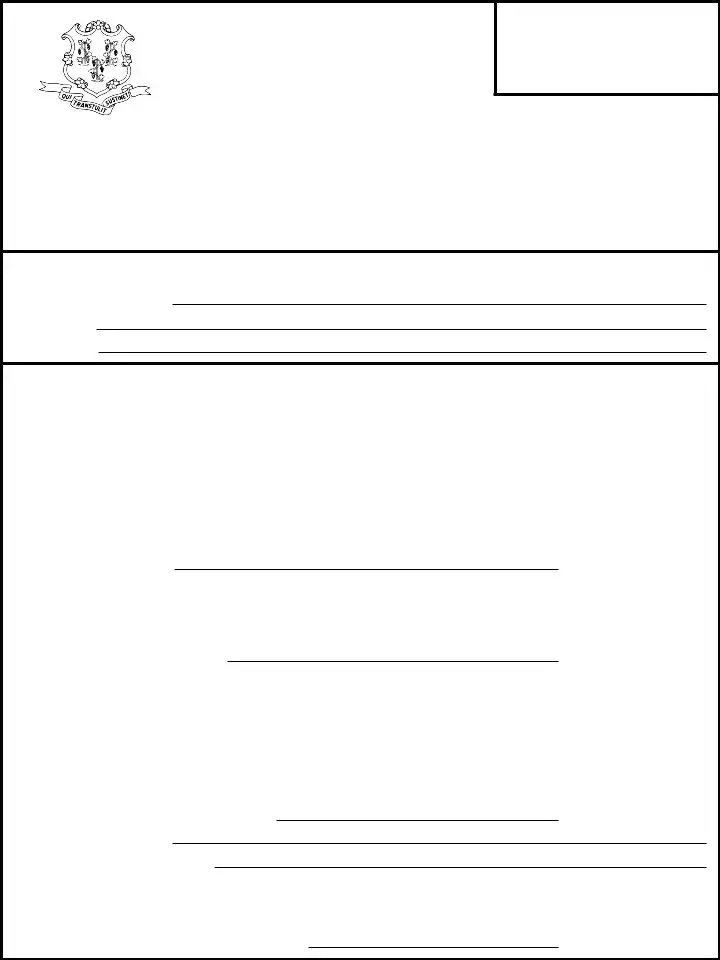Proof of Workers’ Compensation Coverage when Applying
for a Building Permit for the Sole Proprietor or Property Owner who WILL act as General Contractor or Principal Employer
APPLICANT FOR BUILDING PERMIT
Name of Applicant for Building Permit
Property located at
in the City / Town of
ATTEST
If you are the owner of the above-named property or the sole proprietor of a business doing work on the site of the construction project at the above-named property and you WILL act as the general contractor or principal employer, you must provide proof of workers’ compensation insurance coverage for all employees.
Complete this form and, if applicable, sign the Affidavit below in the presence of a Notary Public or a Commissioner of the Superior Court.
CHECK ONE (1) BOX ONLY, provide the appropriate information, and sign:
I am the OWNER of the above-named property. I WILL act as the general contractor or principal employer and, as such, will submit proof of workers’ compensation insurance coverage for all employees who are doing work on the site of the construction project at the above-named property.
Signature of OWNER Applicant
I am the SOLE PROPRIETOR of a business doing work at the above-named property. I WILL act as the general contractor or principal employer and, as such, will submit proof of workers’ compensation insurance coverage for all employees who are doing work on the site of the construction project at the above- named property.
Signature of SOLE PROPRIETOR Applicant
I am the OWNER of the above-named property or the SOLE PROPRIETOR of a business doing work at the above-named property. I will not personally submit proof of workers’ compensation insurance coverage, but I will attest to the following:
AFFIDAVIT
I hereby swear and attest that I will require proof of workers’ compensation insurance for every contractor, subcontractor, or other worker before he or she does work on the site of the construction project at the above-named property in accordance with Section 31-286b of the Workers’ Compensation Act.
Signature of OWNER or SOLE PROPRIETOR Applicant
Name of Business—if applicable
Federal Employer ID# (FEIN)—if applicable
Subscribed and sworn to before me this |
|
day of |
|
, 200 |
|
. |

